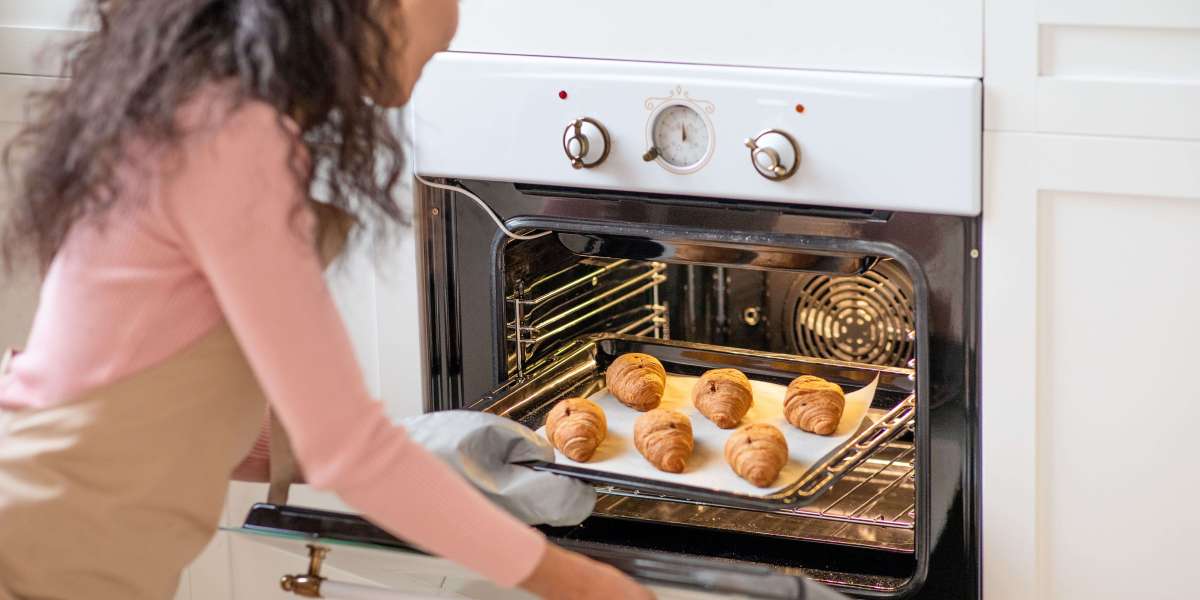Understanding In-Built Ovens: A Comprehensive Guide
In the realm of modern kitchen style, built-in ovens have increased to prominence, blending functionality with looks. Their seamless integration into cabinets offers a streamlined look, making them increasingly preferred by homeowners and cooking enthusiasts alike. This post explores the various features, benefits, setup factors to consider, and popular kinds of In Built Oven-built ovens, together with addressing some regularly asked concerns.

What is an In-Built Oven?
A built-in oven, frequently referred to as a Haden 60cm Electric Built-In Oven with Fan Assist oven, is a kitchen home appliance created to be set up within cabinets, instead of as a freestanding system. This configuration allows for a more advanced and orderly kitchen layout while taking full advantage of offered space. Built-in ovens been available in numerous sizes, styles, and performances to suit different cooking needs and choices.

Benefits of In-Built Ovens
The advantages of installing an inbuilt oven extend beyond simple visual appeals. Here are some key benefits:
Space Efficiency: Built-in ovens are created to fit snugly within kitchen cabinetry, making them perfect for compact spaces. This design leaves counter space complimentary for meal preparations.
Personalized Design: Homeowners can choose from a variety of designs and finishes to complement their kitchen design, enhancing the overall look of the space.
Enhanced Functionality: Many built-in ovens are geared up with sophisticated cooking innovation, providing functions such as convection cooking, steam cooking, and self-cleaning functions, which enhance cooking effectiveness and versatility.
Ergonomic Height: Installing an oven at eye level minimizes the requirement to flex down, making it much easier to inspect food and manage meals without straining the back.
Improved Safety: Built-in ovens can incorporate safety functions such as cool-to-the-touch surfaces and kid locks, which can be especially important in homes with children.
Types of In-Built Ovens
Inbuilt ovens been available in a number of types to accommodate various cooking requirements. Below is a comparison of common types:
| Type | Description | Pros | Cons |
|---|---|---|---|
| Single Oven | A standard oven that cooks from one space | Space-efficient, much easier to use | Limited cooking capability |
| Double Oven | Two different oven compartments for diverse cooking | More cooking area, flexibility | Greater expense, takes up more space |
| Compact Oven | Smaller sized ovens perfect for little cooking areas or as a second oven | Space-saving, versatile | Restricted capability |
| Steam Oven | Utilizes steam for cooking, preserving wetness | Much healthier cooking choices | Usually more costly |
| Wall Oven | Built into the wall, offered in single or double setups | Conserves floor area | Installation intricacy |
Features to Consider When Choosing an In-Built Oven
When choosing an in-built oven, numerous features must be taken into consideration:
Size: Measure your kitchen area and cabinetry to guarantee the oven fits appropriately. Typical widths for built-in ovens range from 24 inches to 30 inches.
Cooking Methods: Determine the cooking approaches you prefer-- conventional, convection, or steam. This choice will significantly affect your cooking style and the oven's abilities.
Energy Efficiency: Look for ovens with high energy effectiveness scores. These models conserve money on energy bills and are better for the environment.
Control Options: Evaluate the control user interfaces. Some designs use wise functions permitting remote cooking control and tracking through smart device apps.
Security Features: Ensure the oven features essential safety features, specifically if children will be present. Lock-out systems and cool outsides are valuable improvements.
Setup Considerations
Appropriate installation is critical for the optimal performance of an inbuilt oven. Here are some installation factors to consider:
- Ventilation: Ensure proper ventilation to remove smoke and smells. Consult local building regulations concerning kitchen ventilation requirements.
- Electrical Requirements: Built-in ovens usually require a devoted electrical circuit. Have a competent electrician evaluate price and safety.
- Professional Installation: While DIY might be tempting, employing an expert installer ensures the oven is fitted firmly and securely.
FAQs About In-Built Ovens
What is the distinction in between a built-in oven and a freestanding oven?
Built-in ovens are designed to be set up within cabinets, whereas freestanding ovens can stand alone and usually integrate oven and cooktop in a single device.
Can I install a built-in oven myself?
While DIY installation is possible, it is often advised to employ a professional to ensure safety and adherence to regional structure codes.
Are built-in ovens worth the financial investment?
Yes, built-in oven and hob ovens usually provide enhanced visual appeals, advanced performance, and efficient use of area compared to conventional freestanding models.
What maintenance do built-in ovens need?
Regular cleaning, examining seals, and guaranteeing proper ventilation are vital maintenance tasks. It's suggested to follow the maker's guidelines for particular care standards.
How much does a built-in oven typically cost?
Rates can vary substantially based on features, brand built in Kitchen name, and type, but built-in ovens typically range from ₤ 700 to ₤ 3,000 or more.
Built-in ovens provide a mix of sophistication and usefulness, making them an outstanding choice for both brand-new building and constructions and kitchen remodels. Understanding the types, functions, and installation factors to consider can empower homeowners to make informed decisions about which built-in oven best suits their needs. As cooking trends progress and kitchen design becomes more sophisticated, inbuilt ovens will continue to play a considerable role in modern-day kitchens, combining cooking with style and functionality.







